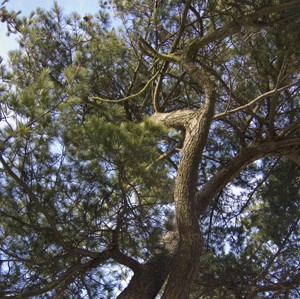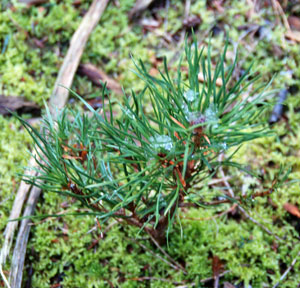‘Lost’ pinewoods, remnants of the Caledonian Forest.

‘Trees for Life’ and ‘Woodland Trust Scotland’ are trying to revive lost pinewoods, that once formed part of the Caledonian Forest. This forest supported a rich and diverse flora and fauna, including serrated wintergreen, distinctive lichens, crossbills, capercaillie, wild cats and red squirrels. After the last Ice Age, plant and animal species moved across the 'land bridge' that connected us with continental Europe. Pines (Scots Pine aka Pinus sylvestris) were ‘quick’ to move into Scotland and the land vacated by the glaciers. Now less than 2% of this once great forest survives.
To find pockets of ancient and ‘lost’ pine trees, these two organisations have adopted a number of approaches.
- Making use of old maps and texts, for example, those produced by the Reverend Timothy Pont (a Scottish minister and cartographer) in the 1500s. He was the first to produce a detailed map of Scotland. These can point to areas that were formerly populated by “fir trees”, ie pine.
- Examining Gaelic place names, which might reference woodland or pine trees.
- Using the original ordnance survey maps (which often had fir tree symbols) to produce digital copies, which can be overlain on modern maps - hopefully to reveal former woodland sites.
- Using ecological evidence. For example, wild pine often grows with old birch trees, whereas planted pine is usually found with larch and other ‘commercial conifers’. Old pine trees often have a distorted shape, with thick, gnarled and twisted trunks; they survive in remote gorges and crags. Areas that previously supported wild pine, often have old stumps still present and / or certain distinctive lichens / plants - remnants of once diverse ecosystem.
 Using these various techniques, dozens of lost pine woodland areas have been identified and located. Much of the original Caledonian Forest was lost through felling (for timber and / or fuel) over the centuries. Later came sheep farming and this was followed in Victorian times by deer and grouse shooting. In the last century, commercial forestry resulted in the further loss of ancient woodland.
Using these various techniques, dozens of lost pine woodland areas have been identified and located. Much of the original Caledonian Forest was lost through felling (for timber and / or fuel) over the centuries. Later came sheep farming and this was followed in Victorian times by deer and grouse shooting. In the last century, commercial forestry resulted in the further loss of ancient woodland.
However, restoration is possible. Where some old trees have survived, there is often a seed bank in the soil and these seeds can germinate if the dense canopy of commercial conifers is removed. Many pine seeds that do germinate are lost as seedlings due to grazing due to deer or sheep - who seem to prefer them to Sitka etc. Hopefully as areas with pine grow on, so other species such as rowan, birch and hazel will develop and in time a ‘full’ woodland will develop.
Comments are closed for this post.
